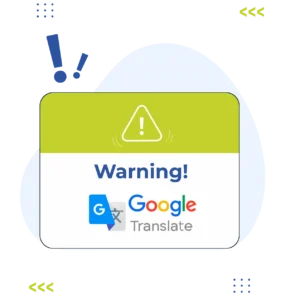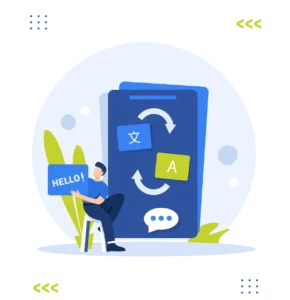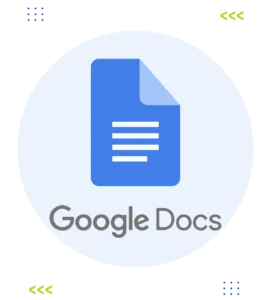We are flooded with tons of video content all day long, from social media videos, and TV shows, to online streaming platforms. The world of media is globalized to the point of no return.
In this article, we’ll delve into one of the most irreplaceable types of translation now that allows people worldwide to explore content without worrying about language or cultural barriers.
Follow us in this comprehensive article about Subtitle translation.
What is subtitle translation?
Subtitle translation is the textual translation of a video from one language to another. The text translation is then added in sync with the video to allow foreign audiences to understand the visual content.
The definition of Subtitles
Subtitles are the text written at the bottom of the screen of any visual content like films, YouTube videos, social media reels…etc. It is not to be confused with captions.
Difference between Captions and Subtitles
Captions are a transcription of speech and it is made for audiences who can’t or don’t want to follow the audio.
Captions do not denote translation. while subtitling is a translation of the audio from one language to another.
Read more: A Comprehensive Guide to Arabic Transcription
What are Closed and Open Captions
Closed captions are audio transcriptions that include noises or music happening in the background. They are optional and can be turned off.
While open captions are integrated into the video, and can’t be turned off.
What types of content need subtitles?
Subtitling is no longer limited to films streamed in the cinema theatre, or to online streaming platforms. They transcend that and grow into a multi-industry field that is pursued by businesses of different kinds to grow their brand.
Wherever there is video content, there is a need to make it accessible for different tongues, and therefore the need for subtitle translators grows.
Below are some of the types of subtitle translation:
- Online educational content and courses (Coursera, Khan Academy, and Udemy)
- Foreign Films
- Social media videos and reels
- Webinars
- Speeches
- Youtube Videos
- Journalism Videos and Features
- Podcasts
- Digital Art installations
- VR (Virtual Reality) Content
Best Practices for Subtitle Translation
Lots of online content will give no-brainer tips like “make it short”, or “make it simple” and other tips that are practically of little use to translators.
Here are important best practices to keep in mind during your next subtitling project that could actually help:
Localization is KEY
Localization in subtitling is a broad word that encompasses date and time formats, as well as words or expressions with cultural significance. These are abundant in subtitling.
For example:
The date format in the UK is (day-month-year), while in the US is (month-day-year).
Localization necessitates knowing your target audience. Are they speaking the same language or the target text, are they foreigners, where do they live, what religion do they believe in, and what important political events are happening in their region? It is important to put yourself in their shoes to avoid offending them.
Preserve Tone and Style
It is important to preserve the meaning, as well as the tone and style of the original text, without compromising localization.
Language is an important part of visual content. Try to convey the same tone as the original dialogue in the translation. This includes maintaining the humor, seriousness, or any other characteristic of the original content.
Keep subtitles concise and readable
Subtitle translators need to be concise with their language because the maximum limit for a subtitle on screen is 2 sentences. They need to achieve meaning without sacrificing contextualized translations that fit the target reader.
Learn by noticing how other people translate subtitles
Subtitling can become an enjoyable task when one aspect of gaining knowledge and expertise involves watching interesting video content and analyzing the way it was translated, keeping an eye out for mistakes, or coming up with your own improvements.
Know Subtitling rules by heart
There are some guidelines and ground rules to stick to when it comes to subtitling, unlike other types of translation. You will need to check a comprehensive resource for this, but some of the most important ones we are listing below:
- Quotes are translated without paraphrase (word-for-word).
- When several people are talking and it could be confusing for the audience because the camera keeps cutting between them, you can solve that by putting the name of the speakers between brackets. For example:
(Omar) Where did our father go?
(Salma) He didn’t say
- When music is playing, you can insert this icon (♪) and the beginning and end of the lyric.
- Don’t be afraid to include questions or exclamation marks to indicate the tone of voice of the speaker.
- Be consistent in the use of vocabulary that can be spelt in a hyphenated form.
- Speech interruptions can be conveyed by hyphens (–) or a single long dash (—).
- Ellipsis can be used when there is a pause in speech.
- Quotation marks can be used in many instances like when a character is reading a poem a book, or a letter.
- Use Subtitle Software: using software can automate many aspects of subtitling which makes it less time-consuming.
Let’s explore some of the frequently used software for subtitle translation below.
Frequently used software for Subtitle Translation
Subtitle Workshop
One of the leading subtitle translation software. It’s free and has a user-friendly interface, spell checker, and text/time synchronicity tool.
Ayato 3
Provided by Nina Solution, It’s the favorite subtitling tool for many translators around the world. Ayato 3 is suitable for both open and closed subtitles. It supports a variety of media and file formats, ensuring compatibility with all production and delivery requirements.
Subtitle Edit
A free tool that has multiple capabilities and features with an easy layout. It supports many languages. Its features range from translation to editing, and splitting subtitles. It could also work with several formats.
OmegaT
Omega T is one of the oldest open-source translation software that supports translation memory, in addition to a variety of file formats like SRT files.
SubtitleBee
One of the leading subtitling service providers. SubtitleBee is suitable for all social media platforms. It functions in 120+ languages and translates video using Artificial intelligence in a matter of seconds.
Read More: importance of Arabic subtitling and it’s Advantages
What to consider when translating subtitles
As a subtitle translator, there are 3 things to keep in mind when translating video content.
Subtitle translation differs from other kinds of written translation because it is controlled by time and space. Translating a social media post is different from translating a reel, the latter must be quick and immersive although both of them could function on the same social media platform.
For these reasons, and more. Here are 3 things to consider with your subtitle translation.
Keep technical aspects in mind
Technical aspects refer to the space a subtitle has on the screen the duration for which it will be displayed, and the possible expansion or reduction of text when translated from one language into another.
This necessitates the subtitles to be adapted to all those technicalities, because at the end of the day what matters is for the audience to grasp the meaning without compromising following the video.
Technical aspects involve the space taken by subtitles. As a general rule, each subtitle line should contain around 35 characters.
There are many things to do with language when being mindful of space:
- Look out for fillers or repetition.
- Changing grammatical structures.
- Using antonyms to create shorter sentences.
- Merging sentences.
Accuracy of Subtitle timing
It’s needless to say timing is crucial for the quality and ease of reading of subtitles. The subs appear as soon as the speaker talks and disappear shortly after the speaker spots.
Testing the quality
Before publishing or submitting the project, it needs to run through a quality assurance phase to review it and make sure it is free of technical or contextual mistakes. In this process, seeking the help of a native speaker can serve to avoid massive localization errors.
One recent example of such errors was recently reported by the Korean stand-up comedian and social media figure, Youngmei Mayer, who protested the poorly translated subtitles of the Korean series Squid Game that was streamed on Netflix in 2021. She pointed out how the translators completely changed what the characters originally said, or left out some expressions significant to the Korean culture. Her remarks sparked a debate about the role of subtitling in the media world.
That left her upset, feeling that her culture was unheard, and unseen by a media giant like Netflix.
You can read her remarks on Twitter, to know more about the incident on one hand, and to understand the power of localization in subtitling on the other.
How subtitle translation is supported by Fast trans
Do you need trusted translators to handle your video content in Arabic?
In Fast Trans, we support all types of translation needed for businesses to grow internationally, including subtitle translation. We translate all kinds of video content, from social media videos to documentaries, personal branding videos, eLearning videos, and much more!
While doing that we ensure to improve your ranking on search engines by keeping the content SEO friendly, we also provide free sample translation whenever you are about to embark with us on a new project. Reach out to our team now to get a rock-bottom price.











